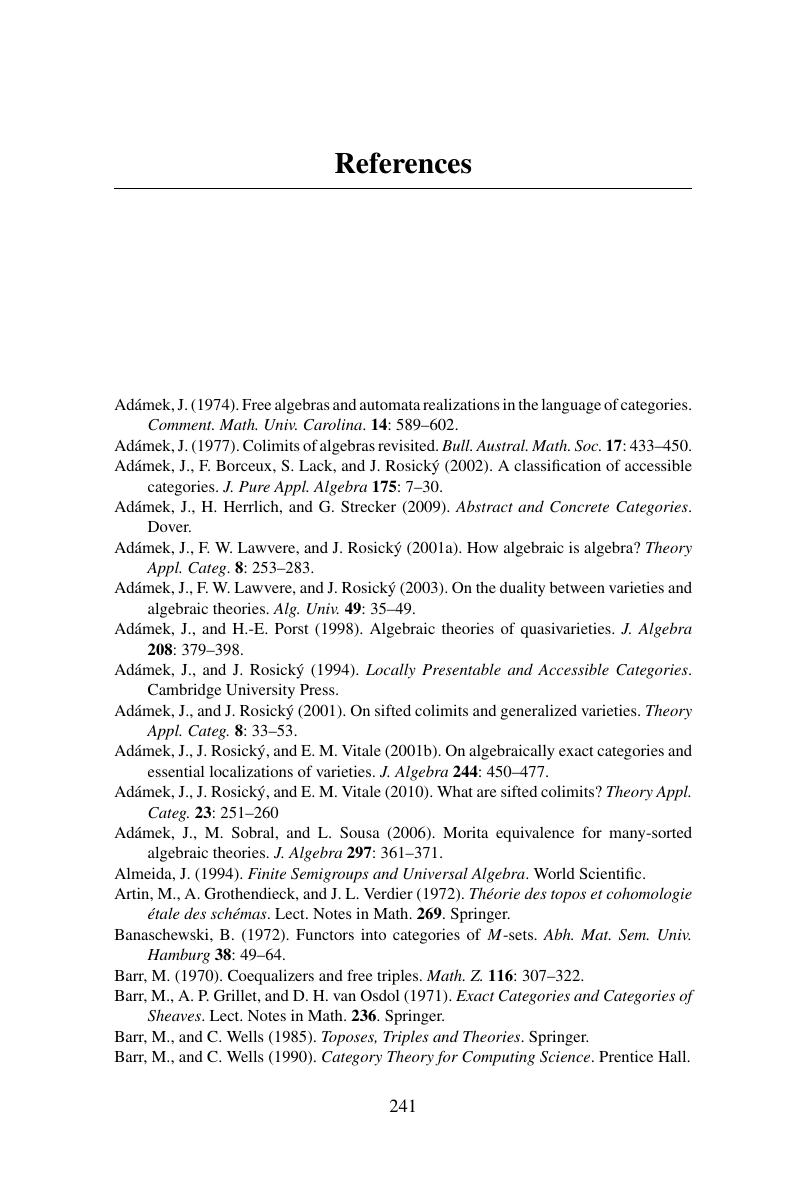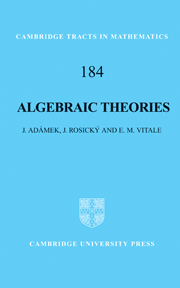Book contents
- Frontmatter
- Contents
- Foreword
- Preface
- PART I ABSTRACT ALGEBRAIC CATEGORIES
- PART II CONCRETE ALGEBRAIC CATEGORIES
- PART III SPECIAL TOPICS
- Postscript
- Appendix A Monads
- Appendix B Abelian categories
- Appendix C More about dualities for one-sorted algebraic categories
- References
- List of symbols
- Index
- References
References
Published online by Cambridge University Press: 01 June 2011
- Frontmatter
- Contents
- Foreword
- Preface
- PART I ABSTRACT ALGEBRAIC CATEGORIES
- PART II CONCRETE ALGEBRAIC CATEGORIES
- PART III SPECIAL TOPICS
- Postscript
- Appendix A Monads
- Appendix B Abelian categories
- Appendix C More about dualities for one-sorted algebraic categories
- References
- List of symbols
- Index
- References
Summary

- Type
- Chapter
- Information
- Algebraic TheoriesA Categorical Introduction to General Algebra, pp. 241 - 244Publisher: Cambridge University PressPrint publication year: 2010



